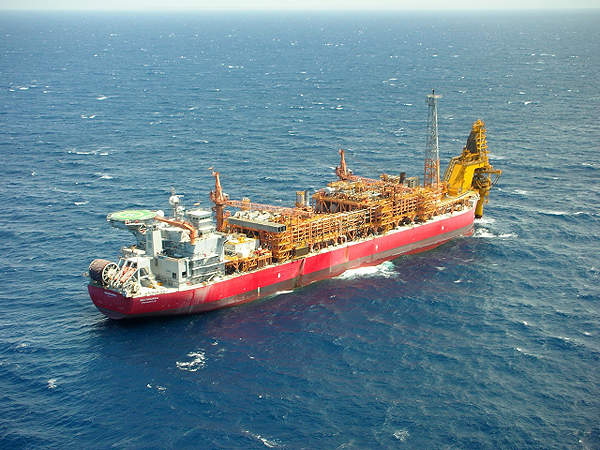Enfield oil field is located offshore Western Australia, at a water depth between 400m and 600m.
Production from the field commenced in July 2006, with an investment of A$1.48bn ($1.11bn), and ceased in November 2018, after the field reached the end of its economic life.
Decommissioning of the oil field was proposed. The National Offshore Petroleum Safety and Environmental Management Authority (NOPSEMA) granted the permit for the decommissioning programme for the field’s subsea infrastructure in April 2022.
The Enfield oil field decommissioning is expected to be completed by 2024.
Location
The oil field is situated about 38km north of North West Cape in the Commonwealth waters of the Exmouth sub-basin.
It is located in the Greater Enfield Area in the production licence WA-28-L, which is operated by Woodside Energy with a 60% interest. Mitsui E&P Australia (MEPAU), a subsidiary of Mitsui & Co, holds the remaining 40%.
The Greater Enfield Area, situated in the Exploration Permit WA-271-P, includes the Enfield, Vincent and Laverda fields.
Enfield oil field details
The field produced oil through subsea wells, tied back to the Nganhurra floating, production, storage and offloading (FPSO) vessel. The infrastructure includes 18 wells, of which eight were oil-producing wells, eight were water re-injectors and two were gas re-injection wells.
The wells were closed and depressurised in the fourth quarter of 2018, as part of the field’s decommissioning plans.
The environmental plan for the cessation of the Nganhurra FPSO’s operations was approved by NOPSEMA in December 2017.
Geology, barrel reserves and production output from Enfield oil field
The Enfield oil field is located within the Exmouth Sub-basin in Western Australia. It is a part of the Carnarvon Basin and contains Jurassic to early Cretaceous deposits. The reservoirs within the sub-basin are formed of relatively thick sandstones.
The field’s oil reserves were estimated to be about 127 million barrels. Production at Enfield during the field’s first eight months was ten million barrels of oil. The average output of the field in 2011 was 19,623 barrels per day (bpd). By the end of March 2012, the field was producing nearly 16,000bpd.
Discovery in PL WA-28-L and development using FPSO Nganhurra
The Enfield oil field was discovered by Woodside Energy during the second quarter of 1999.
The field was later evaluated by four further wells, drilled between 1999 and 2004. These appraisal wells indicated the presence of good to excellent reservoir quality, with consistent pressure and fluid properties in the field.
The preliminary field development programme for the Enfield field was submitted to the Australian Government in March 2003. It was officially sanctioned in March 2004, after the selection of a development concept and front-end engineering design (FEED).
Construction of major production facility components was undertaken between 2004 and early 2006. A deep-water semi-submersible drilling rig was used to drill the 13 subsea development wells.
Installation of the Nganhurra FPSO and subsea facilities was completed between late 2005 and early 2006.
The FPSO was brought to the site in May 2006, and oil production began in July of the same year, following testing and commissioning of the final systems. The project was brought online ahead of schedule, and the development costs remained within the sanctioned budget.
The Nganhurra FPSO was removed from the Enfield oil field in December 2018. It produced more than 80 million barrels of oil before production ceased.
Infrastructure of the Greater Enfield Area-based oil field in WA
The decommissioning plan includes the removal of subsea infrastructure that includes four manifolds, four manifold foundation suction piles, eight umbilicals, six jumpers, seven flexible flowlines and risers, 15 rigid well tie-in spools, nine drag anchors and mooring lines, and one debris anchor and mooring line.
The production as well as gas and water injection wells were tied back to the Nganhurra FPSO using subsea manifolds, flowlines and an 8in test line.
There was also a disconnectable riser turret mooring (RTM) system, which allowed the FPSO to disengage from the production site and move to a safe location in the event of bad weather conditions, such as a cyclone, hurricane or typhoon.
The Nganhurra FPSO is a double hulled ship-like facility, designed to process 100,000bpd of oil. It can store 900,000 barrels of crude oil in five pairs of cargo tanks. The fluid handling capacity, as well as the water injection capacity of the FPSO, is 140,000bpd.
Built by the South Korean shipbuilder Samsung Heavy Industries (SHI), the Nganhurra FPSO has a deadweight of 142,000t. It measures 260m in length and 46m in breadth.
Contractors involved
The supply of subsea flow lines and dynamic risers as well as offshore installation works for the Enfield oil field were carried out by a joint venture between Technip, part of TechnipFMC, and Subsea 7. Subsea systems were supplied by Houston-based FMC Technologies, which merged with Technip to form TechnipFMC in 2017.
In July 2003, an AMEC-Fluor partnership won a contract to implement the FEED and associated services for the FPSO. They were again contracted in July 2004 to provide detailed engineering services for the floating oil production facility. AMEC and Foster Wheeler merged to form Amec Foster Wheeler in 2014, which became part of John Wood Group following its acquisition in 2017.






